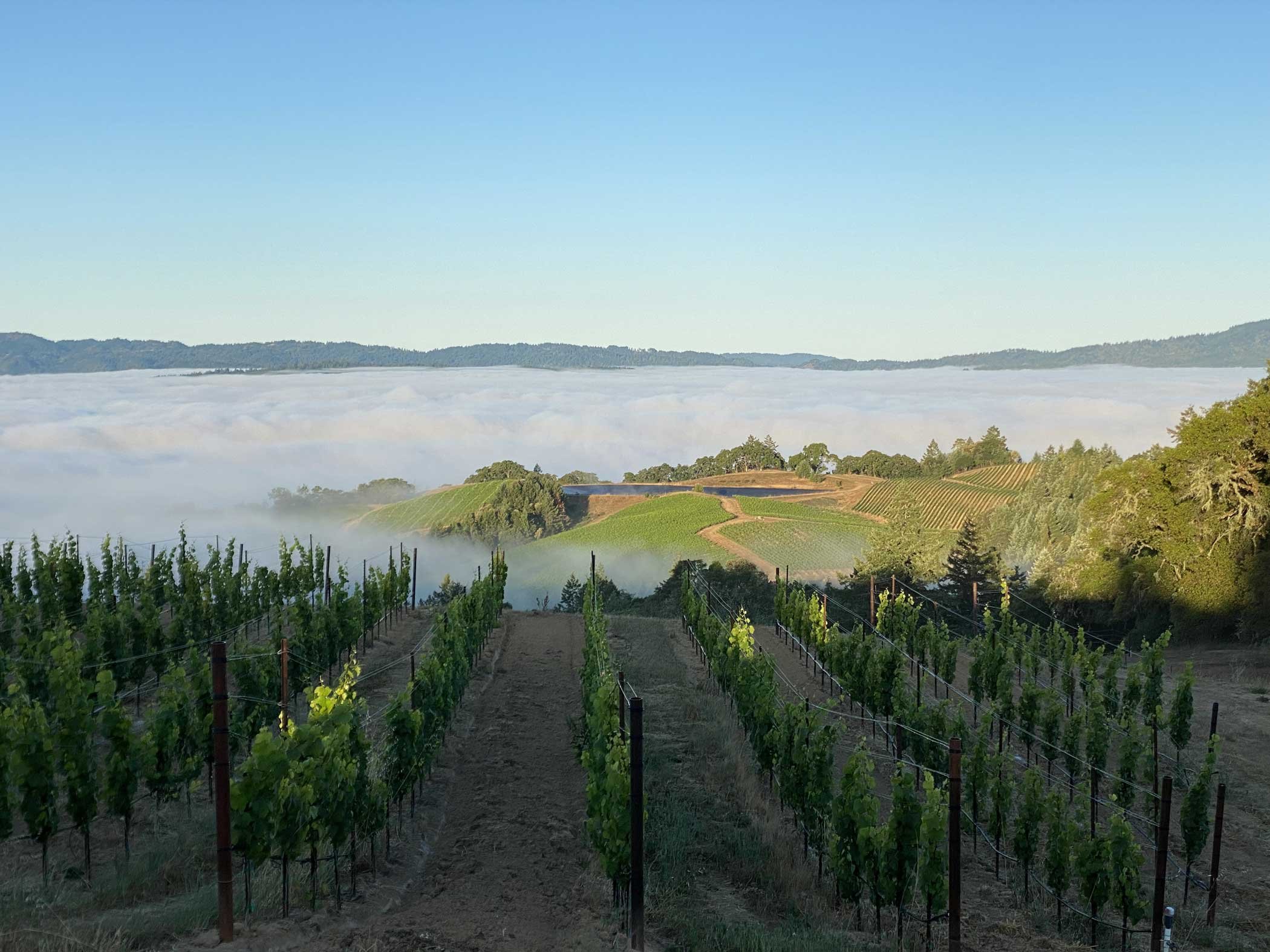
Roma’s Vineyard
Dean Carrell
Anderson Valley AVA
Mendocino, California
7 acres of award winning Anderson Valley Pinot Noir
Roma’s Vineyard, named after Dean Carrell’s mother Roma, was planted in 1993 to Pommard clone cuttings from Ted Bennet and Deborah Cahn’s world renowned Navarro Vineyards. Dry farmed, and grafted to 3309 drought resistant root stock, the vineyard thrives in the Gold Ridge Loam soil and produces exceptional fruit with balanced acidity, texture, and depth of flavor made possible by the diurnal shifts of this high elevation vineyard.
Located at 1850 feet above sea level on the eastern ridges over looking the town of Boonville, Dean’s vineyard is an amphitheater for the dance of sun and breeze. Here, amidst the whispering embrace of oceanic currents, a cool climate prevails, bestowing upon the land a gift of extended ripening. It’s late bud break and late harvest provide an extended ripening period that provides layers of fruit flavors unique to this site.
The vines are left to find their own water in the ancient seabed of sandstone, searching deep in the earth's natural substrata, a mix of pure cemented magma ashes and nutrients with micro-flora that transport these elements into the vines. Old vine roots can reach depths of 60ft or more and dry farming agriculture forces the vine to work hard developing exceptional character.
Vine spacing and vineyard positioning balance the sunlight & shade while optimizing cool evening air circulation. The 10 x 6 ft. vine spacing encourages photosynthesis and sugar accumulation. Parallel to the sea breeze, the cooler nights preserve acidity. The wide spacing also lessens competition between the vines for the natural nutrients in the soils contributing to the wine's laser-sharp flavors. Careful pruning is crucial for optimizing the configuration of the canopy and fruit production consistency and provides precise control of bud number, spacing and uniformity among shoots.
Dean’s no-till, no-compost regenerative farming sequesters the soils organic carbon to the vines rather than quickly releasing it to the atmosphere by tilling. No-compost/fertilizer guards against excessive nitrogen which can lead to unwanted ancillary vegetative growth, poor fruit production, and reduced root penetration.
Planted at high altitude, the fruit has great intensity and texture - delivering a complex bouquet of aromas and sensations. High elevation vineyards offer several critical contrasts to the valley floor; more direct and concentrated sunlight, dramatic temperature shifts, and mountain top soils that have eroded for thousands of years. The powerful diurnal shifts force grapes to ripen slowly for longer hang time and adequate heat to produce legions of flavor-inducing sugars. The cold nights help develop deliciously bright acids. And the mountaintop high altitude and less fertile soils paradoxically enhance grape quality and add site specific personality to the wine. These vines struggle, and it is well known that which struggles develops exceptional character.



